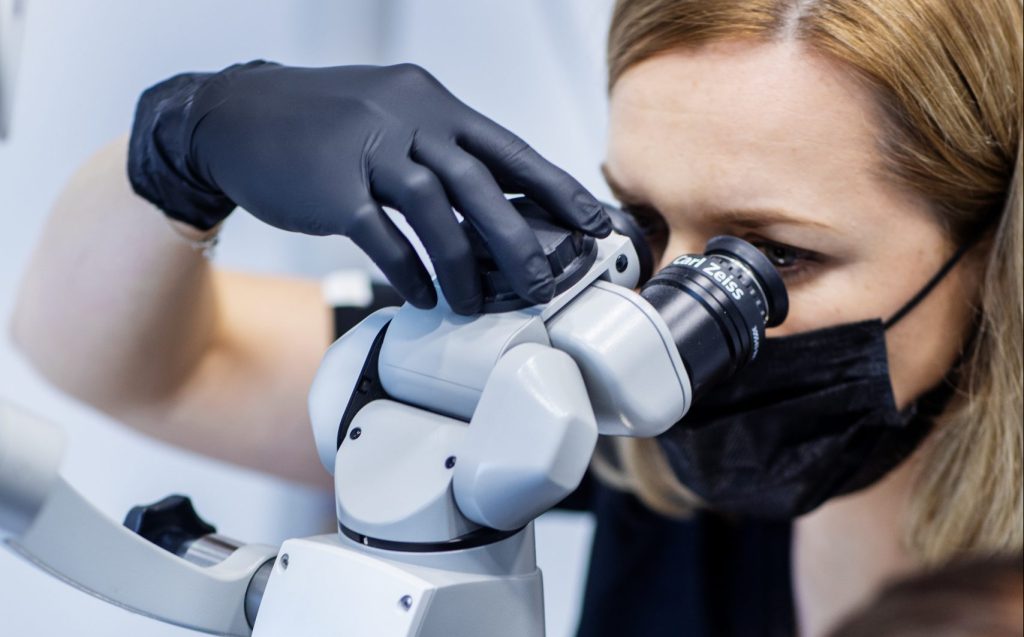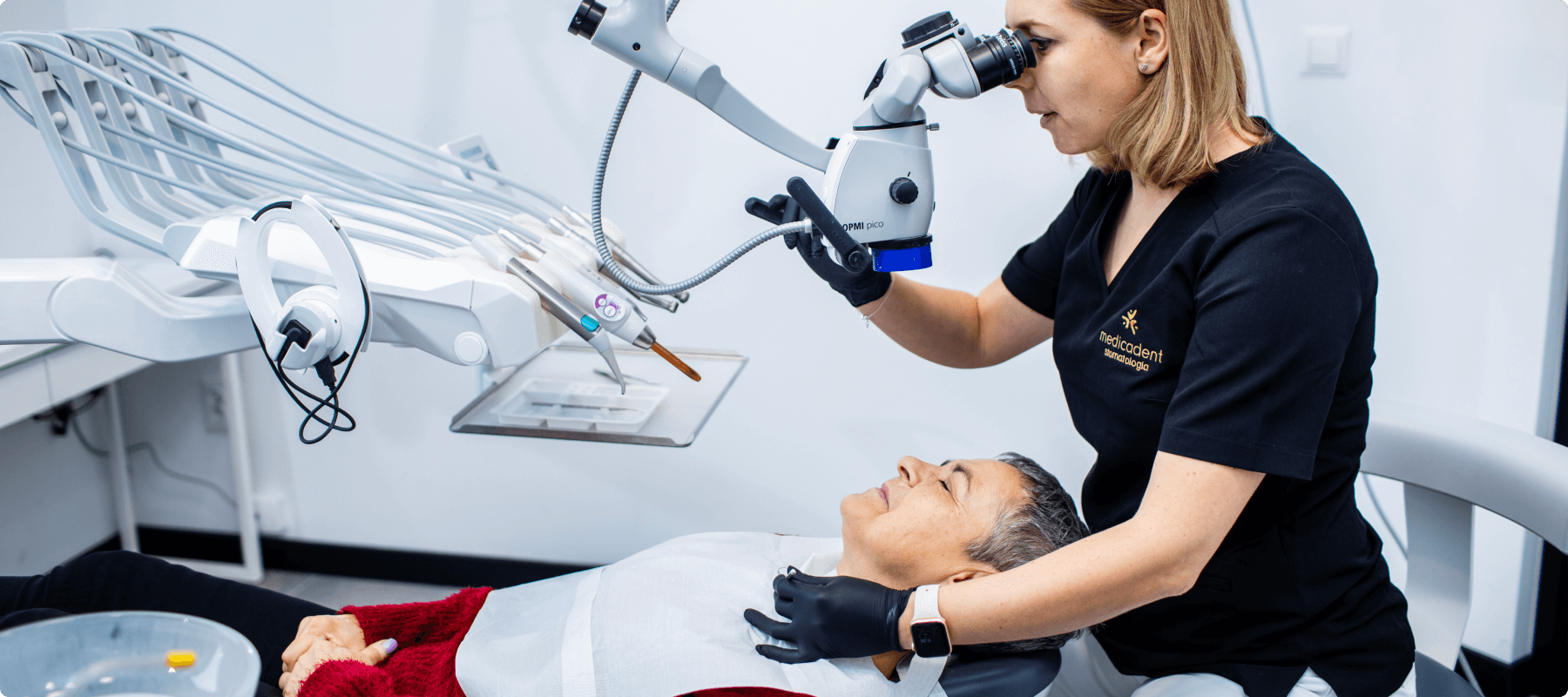Endodontics is a branch of dentistry that deals with the diagnosis and treatment of diseases of the dental pulp and surrounding tissues. Root canal treatment involves removing the dead or inflamed pulp from the tooth and replacing it with an appropriate material. One of the most modern methods currently used in dentistry is root canal treatment under a microscope. By using this device, the dentist gains a much better assessment of the situation, as they can see the state and course of the root canals in magnification. Our clinic is equipped with modern Carl Zeiss Opti Piko dental microscopes, which allow our doctors to easily determine the shape of the tooth canal and detect anatomical barriers.
Endodontic Treatment Process
Endodontic treatment or root canal treatment is performed in several stages. The first stage involves the thorough removal of the pulp from the tooth chamber and root canals. The dentist then moves on to the next step, which is measuring the length of each individual canal. Subsequently, the process of cleansing and shaping the canals begins, using manual and machine tools, as well as appropriate disinfectants. Finally, the last stage of root canal treatment is the tight filling of the entire root system with a biocompatible material.

Equipment used during root canal treatment
During endodontic treatment, a dentist uses a range of tools and devices that enable them to accurately measure the length of the root canals and properly prepare them. Above all, the aforementioned microscope is used, which provides the dentist with comfortable conditions for precise work, and guarantees the patient a tight filling of the canals. Another device is an endomotor, allowing the use of mechanical files for precise preparation of the root canals. An endometer is also used, which is a device used to measure the length of the root canal, as well as a dental dam. This is a thin latex gum material that separates the tooth being worked on from the oral cavity environment, and above all, saliva. Thanks to X-rays and electronic measurements of the length of the root canal using an endometer, the dentist maintains full control over the safe course of the entire treatment process. Our computerized anesthesia, The Wand, ensures comfort during the procedure, making it painless in a relaxing and stress-free atmosphere.
Thanks to the use of a dental microscope in our dental clinic, root canal treatment can be carried out quickly and effectively, usually during a single visit. To achieve the best results, we conduct thorough diagnostics before starting treatment. We use radiovisiography, a modern method of taking digital X-rays, as well as CBCT (cone-beam computed tomography), to accurately locate all tooth canals – even those that are very difficult to access – and evaluate treatment outcomes.

We perform on-site diagnostic imaging tests at our clinics. We have X-ray machines, radiovisiography, and CBCT computer tomography. This means our patients do not have to seek other dental facilities that have the appropriate equipment for conducting thorough diagnostics, saving them valuable time.





